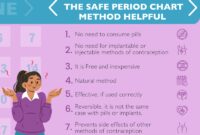How To Remove Dried Contact Cement – The preferred method of using hollow wood grain is cold or hot printing with a white or yellow stripe.
If there is no print, using a good cement can be used, but please note that this is not our recommended method.
How To Remove Dried Contact Cement

Look for a contact cement with the strongest content and follow the adhesive manufacturer’s instructions. Note that cement compounds generally work better than non-combustible ones.
Gorilla Gluegorilla Rubber Cement
It is necessary to mix the cement before each use, like when painting. Solids and solvents must be mixed properly to achieve compatibility.
Before using the contact cement, be sure to clean the support of the onion leaves with a cement cloth or microfiber. This will remove any dust or debris that can damage the glue and cause problems with the glue line.
It is very important to use the maximum when measuring the scale. When using contact cement, compression cement alone is not enough. When using a flexible wood veneer to a flexible surface, the pressure needed to achieve good adhesion is greater than when using a high pressure laminate on the substrate.
Do not use a J-roller because it does not allow enough pressure directly on the plywood. In this way, when you paint the boards, start from the middle of the board and work your way to the outside. Use a piece of plywood about 12 inches long and 6 inches wide as a ruler. Lightly sand the 6-inch edge to remove the shine.
How To Remove Pvc Glue From Hand Skin?
The smaller the hook, the better, because it will create the most pressure. A 1/16″ edge will produce 4 times the pressure of a 1/4″ edge. Hold the ruler in both hands and use it like a wood scraper, smoothing the plywood from the center to the edges.
Although the backing paper is intended for internal use, it can only be used externally if an epoxy coating is used.
Plywood must be glued to a suitable and reliable quality substrate. MDF (Medium Density Fiberboard) is the most durable substrate, followed by commercial chipboard, laminated plywood, and hardwood as the least durable substrate. Apply two layers of glue on the plywood base. Apply the first coat and let it dry completely before applying the second coat. One layer is enough on plywood. Installation of a substrate treated with flame retardants is not recommended without first consulting the substrate or adhesive manufacturer.
:max_bytes(150000):strip_icc()/remove-glue-from-clothes-2146914-hero-1ad3ff5f9fc54bb3a385ea80d8de88ae.jpg?strip=all)
Do not install plywood directly over drywall, plaster walls, or concrete walls. Delamination will occur. Plywood should be placed on the MDF base and then installed on these surfaces.
Epdm/chloroprene Bonding Adhesive 5 Pounds Rubber Bonding Glue Contact Cement
Do not put veneer on both sides of melamine board. Do not drill holes in the melamine double sided melamine board to cover your paper as blisters can form. If the board from the manufacturer that has melamine on one side and the other side is raw, you can cover the raw part of the board with plywood.
Plywood is usually shipped in a padded box. Before installation, it is important to open it and leave it in the environment as it will be after installation for at least 48 hours. This helps prevent rapid changes in moisture from causing rapid expansion or expansion that can cause cracking. Make sure that the area to be applied and the back of the plywood is free of dust, dirt, oil, oil or other foreign material.
To avoid excessive humidity, plywood is best done at less than 51% humidity, as plywood can shrink when placed in a controlled environment.
Wood strips are 100% compatible with glue for a complete installation. Ask your dealer which cement is the strongest. Although it is more expensive, it will be more efficient and cheaper in the long run. Both the back and the base must be 100% cement. In general, such as plywood, plywood, or other porous substrate, a second coat of the substrate is recommended because the first coat is a part. The first layer acts as a sealant, the second layer is an adhesive.
Simple Ways To Get Glue Off Of Plastic: 11 Steps (with Pictures)
Allow sufficient drying time (“drying time”) of coats. Usually there is a large window of time. The plaster must be completely dry before using the plaster. Anything less creates the risk of a bad connection between the two hose lines. Rushing habits can make pockets look like bubbles.
After applying the plywood, allow the glue to dry for 24 hours before applying the full finish. Use the end in the light, even. Two thin coats are always better than one heavy coat. Allow 24 hours of drying time between the stain and sealer to allow the stain to dry completely.
When finishing the plywood with two layers, be careful not to make it too thick. When thicker than 4 mils, some shoes may crack or scratch. Check with the complete manufacturer. Heat-sanding vinyl is a good choice for sealing furniture because it can withstand moisture and steam.

Check the complete instructions to make sure you have the right time and temperature for drying the paper. (Example: Catalyst finishes should dry at 68 to 75 degrees for 6 to eight hours.) Short-term maintenance of color and finish can be helpful. Some companies offer these courses for little or no cost. They can be the most helpful. M. L. Campbell is one such company.
What Is Contact Adhesive And Its Usages
Stains and water stains are not recommended for veneer finishes unless you first cover the veneer with vinyl or acrylic liner.
In fact, there is no need to sand the veneer, as all oak veneers are sold pre-sanded. Some people still have reasons for grinding, and the information for that is on the grinding page.
Cutting onions is usually a straightforward process, as a simple electric knife can get the job done. However, there are some points that need to be known about the direction of cutting, when cutting plywood with various substrates, and when cutting with tools other than knives. About: I used to work, now I just do things. // Follow me to see how I’m doing: https://www.echoechostudio.com Learn more about audreyoscura »
Oh yes We have come to the lesson about rubber cement and contact cement. In this tutorial, I’ll talk briefly about the different types of cement available, how they’re used, and what you can do with rubber and cement before diving into the decorating fun.
Best Adhesive Removers For Eliminating Tough Residues
Rubber cement is probably the glue that many of us have used since childhood. The first time you open a toothbrush with a cute little brush in the lid and think, “This smells awful!” I shouldn’t be around this garbage!”?
Adhesives and cements do not smell good because they are a special type of glue that removes the synthetic rubber polymers in the solvent.
Rubber and contact cement is made of elastic polymers such as latex or neoprene or some other synthetic rubber dissolved and removed in a solvent such as acetone, hexane, toluene or water. Soaking the rubber in the solvent will cause the rubber to break down and be used as an adhesive.

These cements are considered sticky, which means that when the mortar flows, the “rubber” part remains behind, ready to create a strong and flexible bond.
The Best Leather Glue Adhesives & When To Use Them
There are many types of rubber and contact cements, some act as adhesives, others are designed to work with special surfaces. Be sure to read the back of the bottle to make sure your parts can be attached with the glue you choose.
In the end, I would say that rubber cement is the worst use. Yes, I follow you – you got it wrong. However, the following tasks and activities will occur
If you need to create a joint (I’m looking at you, scrapbookers), cover the back of the ball and let the cement set before putting it on the paper.
If you have used too much cement, you can remove it by gently peeling it off without damaging the bond or tearing the paper – they also make cement pads to help with removal the pass.
How To Remove 7 Types Of Glue Stains From Clothes
Rubber cement is an adhesive made of elastic polymers (usually latex) mixed with solvents such as acetone, hexane, heptane, or toluene to wet enough to use. There are also water-based models, often stabilized with ammonia.
The rubber cement can be removed from the non-porous material. So if you use it on glass or metal, it will create an unstable bond with the other parts. I use this technique to fill windows for creative symbols and decorations.
Cement bonding is a challenge. It usually has a strong odor from the solvent and forms a very strong bond. Work with

How to remove contact cement, remove dried cement, how to remove old contact cement, how to remove contact cement from wood, how to remove dried cement on tiles, remove contact cement, how to remove dried cement off car, how to remove dried cement from glass, how to remove dried cement from brick, how to remove dried cement, how to remove dried cement from floor tiles, how to remove dried cement from car


